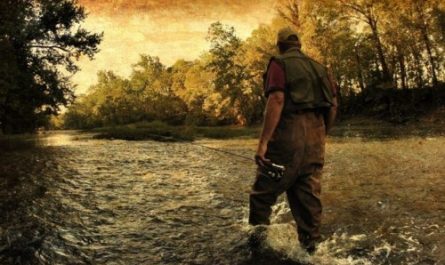Click Here To Join Our Telegram Channel for FREE daily tutorials!
 photo source: thistimeimeanit.com
photo source: thistimeimeanit.com
Today we’ll talk about a very difficult topic: how to explain disasters and crises to children (whether you’re a parent or a grandparent), to minimize post-traumatic stress and help them deal with the new situation.
Kids are especially sensitive to the things going on around them, because they cannot explain phenomenons by themselves. They don’t have the knowledge or the emotional maturity to understand why things are suddenly different from the way they used to be.
That’s why we have to constantly observe them, notice changes in their behaviour or mood, answer their questions or, if they’re abnormally quiet, ask them questions to uncover their real feelings.
First thing you need to know is how children normally react to a disaster or crisis according to their age.
On the FEMA site (home.fema.gov) I discover some interesting stuff about on this subject and I’d like to share it with you:
“Birth through 2 years. When children are pre-verbal and experience a trauma, they do not have the words to describe the event or their feelings. However, they can retain memories of particular sights, sounds, or smells. Infants may react to trauma by being irritable, crying more than usual, or wanting to be held and cuddled.
The biggest influence on children of this age is how their parents cope. As children get older, their play may involve acting out elements of the traumatic event that occurred several years in the past and was seemingly forgotten.
Preschool – 3 through 6 years. Preschool children often feel helpless and powerless in the face of an overwhelming event. Because of their age and small size, they lack the ability to protect themselves or others. As a result, they feel intense fear and insecurity about being separated from caregivers.
Preschoolers cannot grasp the concept of permanent loss. They can see consequences as being reversible or permanent. In the weeks following a traumatic event, preschoolers’ play activities may reenact the incident or the disaster over and over again.
School age – 7 through 10 years. The school-age child has the ability to understand the permanence of loss. Some children become intensely preoccupied with the details of a traumatic event and want to talk about it continually. This preoccupation can interfere with the child’s concentration at school and academic performance may decline.
At school, children may hear inaccurate information from peers. They may display a wide range of reactions—sadness, generalized fear, or specific fears of the disaster happening again, guilt over action or inaction during the disaster, anger that the event was not prevented, or fantasies of playing rescuer.
Pre-adolescence to adolescence – 11 through 18 years. As children grow older, they develop a more sophisticated understanding of the disaster event. Their responses are more similar to adults. Teenagers may become involved in dangerous, risk-taking behaviors, such as reckless driving, or alcohol or drug use. Others can become fearful of leaving home and avoid previous levels of activities.
Much of adolescence is focused on moving out into the world. After a trauma, the view of the world can seem more dangerous and unsafe. A teenager may feel overwhelmed by intense emotions and yet feel unable to discuss them with others.”
Basically, you need to adapt your explanations to your children’s or grandchildren’s age. And when you decide to talk to them, follow these basic rules:
• Choose a time when they’re not busy or distracted by something else. Also, you need to have enough time to answer all their questions. And that could take hours.
• Tell them it’s going to be a serious talk, so they understand this is not a joke and they should take it seriously.
• Be patient. Don’t rush into a speech, leaving them no room to ask questions.
• Pay attention to their reaction (if they get scared, upset, confused, etc.). Adapt your words to their feelings.
• Ask them questions like “How are you feeling?”, “Is it clear so far?”, “Is there something you’d like to ask?”, “What do you think will happen” and lots of “Why?”s.
These are ground rules, but there are a lot more things you need to take into consideration when it comes to discussing such a difficult matter with your children or grandchildren. We’ll cover those next time, because there’s a lot to talk about. Until then, stay safe, as always.
For more articles on survival topics, check out: www.myfamilysurvivalplan.com.
This Crazy Off Grid Device Literally Makes Drinkable Water From Fresh Air:
According to NASA, the U.S. is expecting a 100-YEAR LONG MEGADROUGHT.
It's already begun. Ask the farmers in California. They know.
Every survivalist knows that water is of critical importance. You NEED an independent water source that you can count on!
As an interesting "survival rehearsal" - imagine that you turned the tap on right now and nothing came out. How long would you last?
But what if there was another water source literally hidden in plain sight. That's right, I'm talking about the atmosphere!
The amazing thing about getting water from the natural moisture in the air... is that it is ALWAYS available.
This gives you real water security!
Learn more about how to tap into "Nature's secret water reservoir" and stay hydrated when TSHTF!
Watch the video:
😳 What Tinnitus Does To Your Brain Cells (And How To Stop It)
After 47 years of studies and countless brain scans done on more than 2,400 tinnitus patients, scientists at the MIT Institute found that in a shocking 96% of cases, tinnitus was actually shrinking their brain cells.
As it turns out, tinnitus and brain health are strongly linked.
Even more interesting: The reason why top army officials are not deaf after decades of hearing machine guns, bombs going off and helicopter noises…
Is because they are using something called "the wire method", a simple protocol inspired by a classified surgery on deaf people from the 1950s...

I Can't Help Showing This Off:
If you haven't heard of Claude Davis yet do yourself a huge favor and watch this video.
One of the smartest guys I ever had the pleasure of meeting, Claude set-up a unique prepping system that changed his life forever.
I already tried it myself and let me tell... you I was completely blown away... His surprising tactics could make your life easier and give you the peace of mind you deserve.
Don't just take my word for it... watch his short video and decide for yourself.

Most People Don't Have The Guts To Try This:
An amazing discovery in an abandoned house in Austin, Texas: A lost book of amazing survival knowledge, believed to have been long vanished to history, has been found in a dusty drawer in the house which belonged to a guy named Claude Davis.
Remember... back in those days, there was no electricity... no refrigerators... no law enforcement... and certainly no grocery store or supermarkets... Some of these exceptional skills are hundreds of years of old and they were learned the hard way by the early pioneers.
>> Click here to find out about them now
We've lost to history so much survival knowledge that we've become clueless compared to what our great grandfathers did or built on a daily basis to sustain their families.
Neighbors said that for the last couple of years Claude has tried to unearth and learn the forgotten ways of our great-grandparents and claimed to have found a secret of gargantuan proportions. A secret that he is about to reveal together with 3 old teachings that will change everything you think you know about preparedness:
>>> Click Here To Watch His Short Video <<<

More Off-Grid And Survival Resources:

What REALLY Happens When You Bury a Shipping Container? (Hint: It's A Bit Crazy...)
Shipping containers are all the rage - but if you are thinking about buying one, you MUST watch this video first:
There's a general belief that if you bury a shipping container you can create an awesome root cellar / storm shelter / survival bunker.
But is a shipping container strong enough to handle the pressure?
Watch the video to see what happens:
What Really Happens When You Bury a Shipping Container? (Click To Watch Video)









